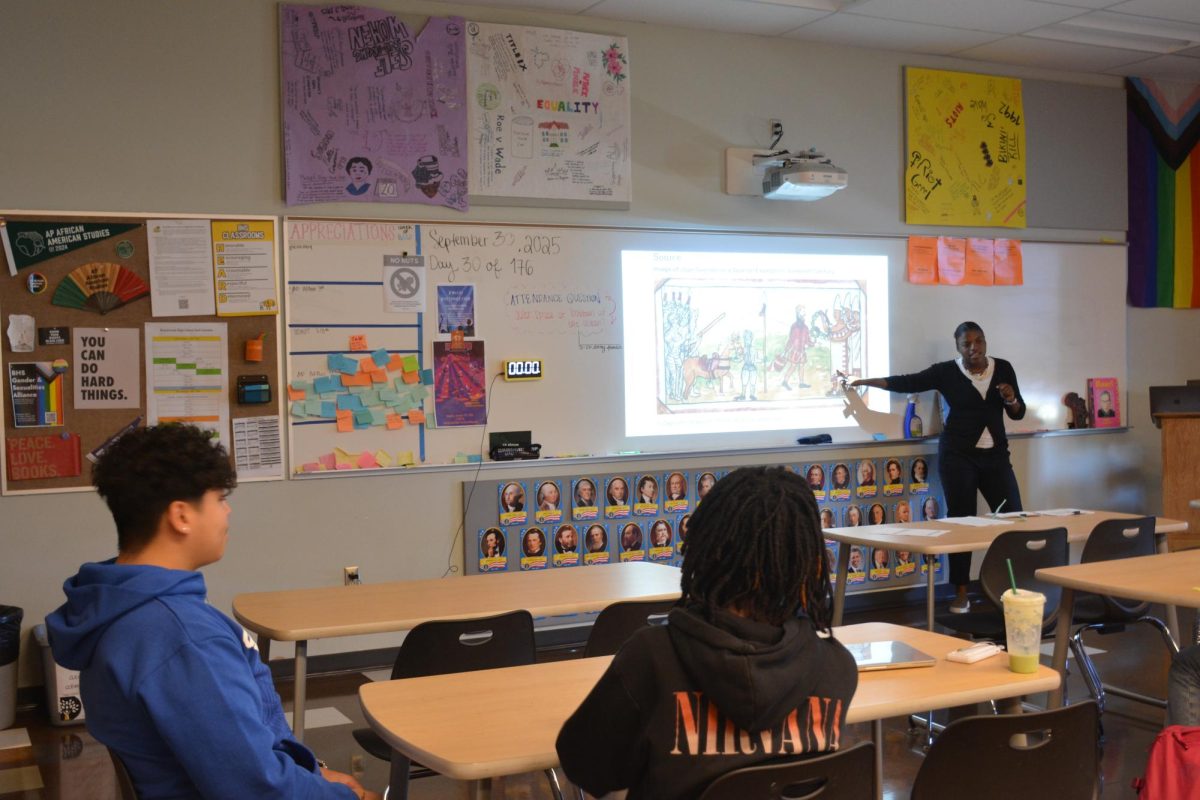By Ben Ducoff, Staff Writer

(With additional reporting by the journalism class)
During the 2006-07 school year, the Beachwood City Schools implemented a wellness policy recognizing the relationship between health and the ability to learn. The policy states, “Beginning with 2006 – 07 school year, all foods available to students on campus during the school day and outside school food service hours shall comply with the current USDA Dietary Guidelines for Americans, including foods available to students as classroom snacks, from vending machines for fund raisers, for classroom parties, or at holiday celebrations.”
Some students feel that the spirit of that policy, as originally implemented, is no longer being followed in the school cafeteria, which is offering a variety of high-calorie items including slushies, ice cream, and bosco sticks.
Junior Ananya Marathe commented, “Slushies? Hostess products? How does that fit with a healthy lifestyle?”
Senior Allison Diamond described the food as “Unhealthy and expensive.”
Junior Solly Poprish brings her lunch because she feels that, “heating up a Lean Cuisine every day is a lot cheaper than buying from AVI, and besides the low cost, it’s a lot healthier.”
Jill Smith, Associate Director of AVI Food Services at BHS explained that they follow district, state, and federal guidelines for school lunches.
Smith continued, “We don’t add any sugar or salt to any of our meals, and we try to serve what the kids will like. We also get a lot of our food from local sources. And we cook it fresh every day.”
USDA guidelines prohibit the sale of food that is “of minimal nutritional value” through the federally subsidized lunch program. Wellness guidelines put forth by the Ohio Department of Education require that “Schools provide an environment that offers and promotes healthy and appealing food and drink choices.”
Health teacher Margaret Hollingsworth is not impressed with the healthy options available in the cafeteria. “They have a salad bar. But it’s mostly iceberg lettuce, which has basically no nutritional value whatsoever. It’s just…green. And, they have breaded chicken. Why not have grilled chicken? And, they have extremely fattening dressings come in industrial size containers for the students to smother all over their meals. It defeats the whole purpose of having a salad,” she said.
BHS Principal Robert Hardis explained that, in his view, the BHS cafeteria does offer healthy options to students, and that some of these options fit the spirit of the wellness policy. He said, “A lot depends on the students’ decisions.” According to Hardis, the wellness committee does not formally audit the nutritional offerings in the school cafeteria.
When asked whether the BHS cafeteria meets federal and state nutritional guidelines, Hardis explained, “I’m not an expert on the federal and state guidelines, but my understanding is that they do. In my opinion, federal and state guidelines are a minimal bar to live by.”
Hardis demanded that soda stopped being sold to students in the cafeteria during the beginning of first semester.
Hollingsworth said, “AVI is trying to make a profit… students don’t want to buy celery sticks, they want to buy pop-tarts. It’s basic economics.”
While Smith acknowledges that AVI is a for-profit company, she also said that school cafeterias are not highly profitable businesses. She explained that any school cafeteria is somewhat limited by cost, as they need to provide affordable options to students.
Smith explained that the pricing of cafeteria items is designed to encourage healthy eating habits. Healthier items are more affordable. It is therefore more expensive for students to buy items with high calorie content and low nutrition.
Regarding the slushies, Smith explained that they contain more nutritional value than some people realize, including “30% vitamin A, 120% vitamin C, 4% calcium, and 30% vitamin D.”
Bosco sticks are a very popular option for students. Three days a week AVI serves Bosco Pizza brand breadsticks, two per order.
“Bosco sticks are definitely not meant to be served every day, and I personally can only eat one at a time,” said head of Customer Service/Product Inquiries of Bosco Pizza Dawn Flynn in response to the nutritional value of one bosco cheese stick, which has 210 calories and 20% of a student’s daily saturated fat intake.
“We recommend switching to reduced fat bosco sticks,” said Vice President of Sales and Marketing at Bosco Pizza Craig Mulhinich.
Recently, AVI put up a fairly large poster advertising their new cotton candy Ice Cream Sundae from Hershey’s Ice Cream. The dish contains 230 calories (110 from fat), and 37% of a student’s daily saturated fat intake.
“The cotton candy sundaes are amazing,” said junior Cole Hersch
Hershey’s Ice Cream also supplies AVI with ice cream sandwiches which will allow a student to consume 400 calories (170 of which are from fat) and 50% of their daily saturated fat intake.
The new apple pies had no nutritional information on the packaging.
Smith explained that AVI is trying to offer students options that they will enjoy. “I want them to look forward to lunch time,” she said.








